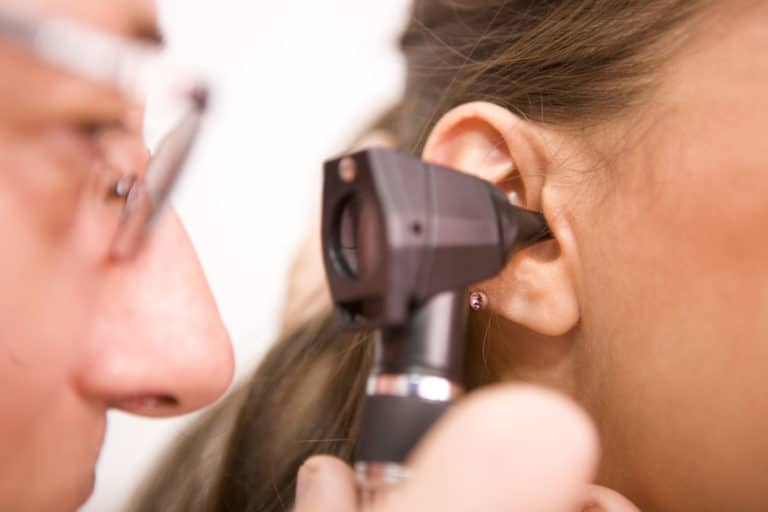Ear infections can occur in the outer or middle ear. An ear infection occurs in the middle ear when fluid becomes trapped following a viral or bacterial infection. This painful affliction is most common in children, but can affect people of all ages. Infections can also occur in the outer ear. They are most common when the skin in the outer ear is dry and cracked. Ear infections can be either acute (of short duration) or chronic (persisting or reoccurring frequently).
What Are the Symptoms of Ear Infections?

The onset of signs and symptoms of ear infection is usually rapid.
Children
Signs and symptoms common in children include:
- Ear pain, especially when lying down
- Tugging or pulling at an ear
- Difficulty sleeping
- Crying more than usual
- Acting more irritable than usual
- Difficulty hearing or responding to sounds
- Loss of balance
- Fever of 100 F (38 C) or higher
- Drainage of fluid from the ear
- Headache
- Loss of appetite
Adults
Common signs and symptoms in adults include:
- Ear pain
- Drainage of fluid from the ear
- Diminished hearing
When to See a Doctor
Signs and symptoms of an ear infection can indicate a number of conditions. It’s important to get an accurate diagnosis and prompt treatment. Call your child’s doctor if:
- Symptoms last for more than a day
- Ear pain is severe
- Your infant or toddler is sleepless or irritable after a cold or other upper respiratory infection
- You observe a discharge of fluid, pus or bloody discharge from the ear
An adult with ear pain or discharge should see a doctor as soon as possible.
What Are the Types of Ear Infections?
- Acute otitis media – the medical term for the common ear infection. Otitis refers to an ear inflammation, and media means middle. Acute otitis media is an infection of the middle ear, which is located behind the eardrum. This diagnosis includes fluid effusion trapped in the middle ear.
- Chronic otitis media – when infection of the middle ear persists, leading to possible ongoing damage to the middle ear and eardrum
How Are Ear Infections Treated?
- If your doctor thinks the infection is caused by bacteria, he or she may prescribe an antibiotic. (Antibiotics don’t work for infections caused by viruses.) It’s very important to follow the directions when giving your child the medicine.
- Pain relievers like acetaminophen (brand names: Tylenol) and ibuprofen (brand names: Children’s Advil or Children’s Motrin) can help make your child feel better and reduce fever. Never give your child aspirin, as it has been linked to Reye’s syndrome.
- A warm (not hot) heating pad held over the ear can also help relieve pain from the earache.
- Ear drops to relieve pain are sometimes prescribed.
Other Ear Disorders
- Cerumen impaction – Wax buildup in the earsEffusion – a collection of fluid generally containing a bacterial culture.
- Effusion – a collection of fluid generally containing a bacterial culture.
- Otitis media without effusion – an inflammation of the eardrum without fluid in the middle ear.
- Otitis media with effusion – the presence of fluid in the middle ear without signs or symptoms of ear infection. It is sometimes called serous otitis media. This condition does not usually require antibiotic treatment.
- Otitis media with perforation – a spontaneous rupture or tear in the eardrum as a result of infection. The hole in the ear drum usually repairs itself within several weeks.
Call Charleston ENT & Allergy at (843) 766-7103 for more information or to schedule an appointment.
